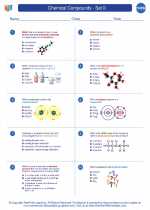Chemical Compounds - Set II -> bioluminescence
Bioluminescence
Definition
Bioluminescence is the production and emission of light by living organisms. This phenomenon is the result of a chemical reaction within the organism's body.
Mechanism
Bioluminescence occurs when a light-emitting molecule, such as luciferin, reacts with oxygen in the presence of an enzyme called luciferase. This reaction produces light, carbon dioxide, and water.
Organisms
Bioluminescence is observed in a variety of organisms, including certain species of fish, jellyfish, bacteria, and fireflies. Each organism has its own specific chemical reaction that leads to light production.
Functions
Bioluminescence serves various functions in different organisms, including camouflage, attracting prey or mates, and warning predators. In deep-sea environments, bioluminescence is used for communication and counter-illumination (to avoid casting shadows).
Applications
Bioluminescence has practical applications in biomedical research, environmental monitoring, and biotechnology. It has also inspired the development of bioluminescent imaging techniques for studying biological processes in living organisms.
Study Guide
- Describe the chemical reaction involved in bioluminescence.
- Explain the adaptive advantages of bioluminescence in deep-sea organisms.
- Compare and contrast the mechanisms of bioluminescence in fireflies and marine organisms.
- Discuss the potential applications of bioluminescence in scientific research and industry.
◂Chemistry Worksheets and Study Guides High School. Chemical Compounds - Set II

 Worksheet/Answer key
Worksheet/Answer key
 Worksheet/Answer key
Worksheet/Answer key
